
ページ読込中...

ページ読込中...

[English]
| 福原 武 [教授] | 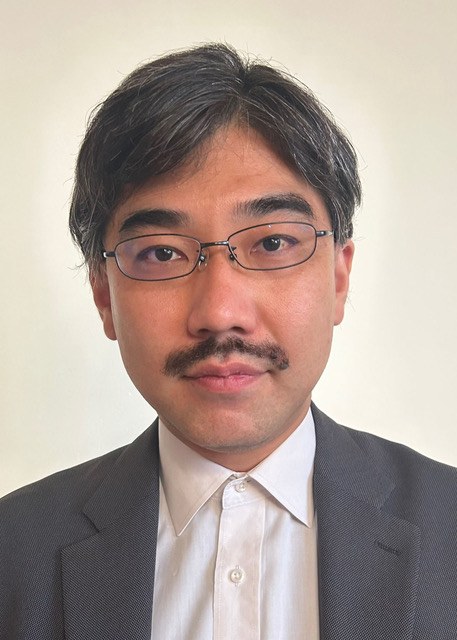 |
|
| homepage | https://qmbc-lab.w.waseda.jp/jp/ | |
| 専門分野 | 冷却原子を用いた量子多体系研究 | |
| キーワード | 冷却原子 量子気体 光格子 量子シミュレーション |
|
| 研究テーマ・研究活動 | ||
| 2009年 京都大学大学院理学研究科 博士課程修了、博士(理学) 2009年 科学技術振興機構 ERATO上田マクロ量子制御プロジェクト 研究員 2010年 ドイツ マックスプランク量子光学研究所 博士研究員 2014年 理化学研究所 創発物性科学研究センター 統合物性科学研究プログラム 量子多体ダイナミクス研究ユニット ユニットリーダー 2021年 理化学研究所 量子コンピュータ研究センター 量子多体ダイナミクス研究ユニット ユニットリーダー 2022年 理化学研究所 量子コンピュータ研究センター 量子多体ダイナミクス研究チーム チームリーダー(現職) 2024年 早稲田大学理工学術院 教授(任期付)(現職) |
||
原子などの一つの小さい粒子がどのように振舞うかは量子力学を考えれば(その振る舞いが非日常的であることを除いて)容易に理解することができます。では、粒子がたくさん集まった「多体系」ではどうでしょう。粒子間の相互作用や粒子の量子統計的性質によって多様な現象が発現する一方で、一般に問題を解くことは困難になります。この量子多体系の問題を理解することは、素粒子物理から物性物理、そして宇宙物理にいたるまで幅広い物理系における現象を理解するうえで重要な課題となり、様々な研究が取り組まれてきています。その意味では量子多体系を理解することは物理の宿命的課題といえるでしょう。この研究室では、主に実験系を通してこの量子多体系の謎に挑みます。
適切に調整したレーザー光を原子に照射すると、原子気体をマイクロケルビン台まで冷却することが出来ます。これが冷却原子と呼ばれるもので、我々のメインのツールになります。この冷却原子は蒸発冷却という手法を用いることで更に冷やすことができ(ナノケルビン台まで!)、量子統計性が顕著になる量子気体になります。例えば、ボース統計性に従う原子集団の場合、ボース・アインシュタイン凝縮を起こし、全ての原子があたかも一つの波のように振舞い、超流動性を示します。この冷却原子・量子気体のシステムは、とてもシンプルな物理モデルで記述され、システムのパラメータの制御性に優れているため、非常によい量子多体系研究の舞台となります。
では、実際に研究室で行う実験をイメージしてみてください。量子気体を光で形成した周期的な構造(光格子)に入れると、固体物質(結晶格子中の電子)と似たシステムを作り出すことができます。この対応を用い、固体物質のシミュレーション(量子シミュレーション)を行います。システムのパラメータを変えていったときにどのような量子相が実現するのか、どのような量子現象が発現するか、これらの問いに冷却原子実験から挑んでいきます。
優れた制御性の最たる例としては、量子気体を単一原子レベルで測定したり、操作したりする「量子気体顕微鏡」という技術があります。この技術を用いることで、これまで見ることが難しかった物性物理のミクロな情報や量子相関などにアクセスすることができるのです。また、測定に基づいて単一原子レベルでの操作を施すことにより、「マックスウェルの悪魔」を量子多体系において実現することも出来るのではないかと考えています。量子多体系における量子統計性や相互作用の効果を、実験を通して検証していくことができるのです。
更に近年では、レーザー光で補足した個々の原子を量子ビットとして用い、量子コンピュータを開発するという流れも注目を集めています。量子多体系に対する究極的な制御を実現し、量子多体系の理解を深めるとともに、その応用へと結びつけていくことが私たちの目標です。
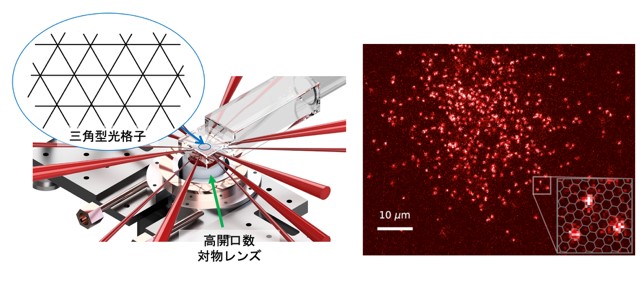 実験装置の模式図(左図)。空間高分解能な対物レンズにより、三角光格子中の原子集団を単一原子レベルで測定することができる。
実験装置の模式図(左図)。空間高分解能な対物レンズにより、三角光格子中の原子集団を単一原子レベルで測定することができる。
三角光格子中の極低温原子気体に対する単一原子観測(右図)。
| Takeshi Fukuhara [Professor] |  |
|
| homepage | https://qmbc-lab.w.waseda.jp/en/ | |
| research field | Experimental study on quantum many-body system with cold atoms | |
| keywords | Cold atom Quantum gas Optical lattice Quantum simulation |
|
| career | ||
| 2009 D. Sci., Kyoto University 2009 Researcher, ERATO Ueda Macroscopic Quantum Control Project, Japan Science and Technology Agency 2010 Postdoctoral researcher, Max Planck Institute of Quantum Optics, Germany 2014 Unit Leader, Quantum Many-Body Dynamics Research Unit, Cross-Divisional Materials Research Program, RIKEN Center for Emergent Matter Science 2021 Unit Leader, Quantum Many-Body Dynamics Research Unit, RIKEN Center for Quantum Computing (RQC) 2024 Team Leader, Quantum Many-Body Dynamics Research Team, RIKEN Center for Quantum Computing (RQC) (-present) 2024 Professor (non-tenure-track), Waseda university (-present) |
||
The behavior of a small particle such as an atom is easy to understand by considering quantum mechanics. However, in many-body systems where many particles are gathered, it is generally difficult to solve problems due to effects of interactions between particles and quantum statistics of particles (though they bring about various phenomena). Understanding quantum many-body systems is an important challenge in elucidating phenomena in a wide range of physical systems from elementary particle physics to condensed matter physics and astrophysics. Various studies have been undertaken for this challenge. In this laboratory, we are tackling problems in quantum many-body systems mainly through experimental studies.
By irradiating atoms with a properly tuned laser beam, one can cool atomic gases down to below 1 mK. This object is called cold atoms, which is our experimental platform. These cold atoms can be further cooled to below microkelvin by using evaporative cooling, and then they become a quantum gas with pronounced quantum statistical properties. In the case of bosonic atoms, Bose-Einstein condensation occurs, and all the atoms behave as if they were a wave. Because this system is described by a simple model and the system parameters are highly controllable, it has been attracting attention as a new platform for studying quantum many-body systems.
By loading a quantum gas into a periodic structure (optical lattice) formed by laser beams, one can prepare a system similar to a solid material (electrons in a crystal lattice) can be prepared. Using this correspondence, we can simulate solid materials, which is called quantum simulation. Our experiments can address questions such as “what kind of quantum phases are realized?” and “what kind of quantum phenomena emerged?”.
A prime example of excellent controllability is the technology known as a quantum gas microscope, which enables us to measure and manipulate quantum gases at the single-atom level. Using this, we can directly access microscopic information and quantum correlations in condensed matter physics that were difficult to see. We also consider that, by manipulating individual atoms based on measurements, one can realize the “Maxwell’s demon” in quantum many-body systems, where we can study effects of quantum statistics and interactions.
Furthermore, in recent years, atoms captured by laser light are considered as a promising candidate for qubits of quantum computer. Our goal is to achieve ultimate control over quantum many-body systems, deepen our understanding of quantum many-body systems, and utilize the control for quantum applications.
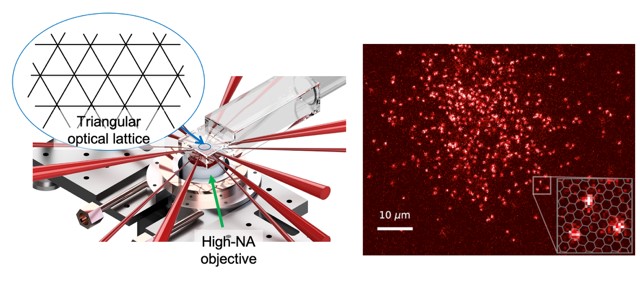 Schematic of experimental setup (left). A high-numerical-aperture (NA) objective allows us to observe atomic ensembles in triangular optical lattices at the single-atom level.
Schematic of experimental setup (left). A high-numerical-aperture (NA) objective allows us to observe atomic ensembles in triangular optical lattices at the single-atom level.
Single atom detection of ultracold gases in triangular optical lattices (right).
[English]
| Holger Motz [教授] | 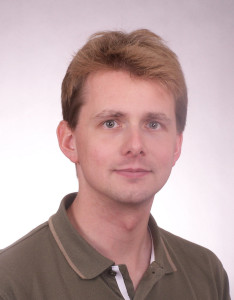 |
|
| homepage | https://motzlab.w.waseda.jp/ | |
| 専門分野 | 宇宙線物理学 | |
| キーワード | 宇宙線観測 CALET 宇宙線加速 宇宙線伝搬 暗黒物質 |
|
| 研究テーマ・研究活動 | ||
| 2006年 エルランゲン大学理学部 卒業 2011年 エルランゲン大学理学部 博士(理学) 2012年 東京大学宇宙線研究所 特任研究員 2013年 早稲田大学理工研究所 次席研究員 2014年 早稲田大学理工学術院国際教育センター 助教 2018年 早稲田大学理工学術院国際理工学センター 准教授 2023年 神奈川大学工学部 プロジェクト研究員 2023年 現職 |
||
宇宙線は、宇宙空間で高い運動エネルギーを持つ粒子(原子核、素粒子)である。超新星残骸(SNR)やパルサーのような強い磁場を持つ天体によって加速されるほか、暗黒物質の消滅や崩壊でも生成される可能性があり、これらの現象を研究するためのメッセンジャーとなっている。宇宙線のエネルギー範囲は人工の粒子加速器の上限をはるかに超えるため、超高エネルギーでの物理過程を研究するための貴重なツールでもある。
荷電粒子である宇宙線は、その発生源から地球への旅の途中で銀河磁場によって偏向されるため、その到達方向は発生源の方向には戻らない。 磁場や星間物質との相互作用により、宇宙線はエネルギーを失い、エネルギースペクトルが変化し、二次宇宙線が生成される。したがって、宇宙線の起源と伝搬について一緒に研究する必要がある。 CALorimetric Electron Telescope(CALET)は、国際宇宙ステーション(ISS)に設置された宇宙線検出器で、2015年から稼働している。その主な目的は、TeVエネルギー領域までの電子・陽電子宇宙線のエネルギースペクトルを高精度で直接測定することである。
本研究室では、CALETデータの解析と観測結果の解釈に着目し、近傍のSNR宇宙線源や、暗黒物質の消滅・崩壊の兆候を探る。また、宇宙線の加速・伝搬モデルや暗黒物質候補粒子のモデルについても研究する。
| Holger Motz [Professor] |  |
|
| homepage | https://motzlab.w.waseda.jp/ | |
| research field | Cosmic Ray Physics | |
| keywords | cosmic ray observation CALET cosmic ray acceleration cosmic ray propagation dark matter |
|
| career | ||
| 2006 University of Erlangen-Nuremberg, Faculty of Science, Physics Diploma 2011 University of Erlangen-Nuremberg, Faculty of Science, Doctor of Natural Sciences 2012 The University of Tokyo, Institute for Cosmic Ray Research, Project Researcher 2013 Waseda University, Research Institute for Science and Engineering, Junior Researcher 2014 Waseda University, International Center for Science and Engineering Programs, Assistant Professor 2018 Waseda University, Global Center for Science and Engineering, Associate Professor 2023 Kanagawa University, Faculty of Engineering, Project Researcher 2023 Current Position |
||
Cosmic Rays are particles (nuclei, elementary particles) with high kinetic energy in space. They are accelerated by astrophysical objects with strong magnetic fields such as supernova remnants (SNR) and pulsars, and might also be created in the annihilation or decay of dark matter, which makes them a messenger for studying these phenomena. Since the energy range of cosmic rays far exceeds the upper limit of man-made particle accelerators, they are also a valuable tool to study physical processes at extreme energies.
Being charged particles, cosmic rays are deflected by the galactic magnetic field on their journey from their sources to Earth, so their arrival direction does not point back towards their source. In interaction with the magnetic field and interstellar medium, the cosmic rays also lose energy which modifies their energy spectrum and secondary cosmic rays are produced. Therefore, it is necessary to study the origin and propagation of cosmic rays together.
The CALorimetric Electron Telescope (CALET) is a cosmic-ray detector on the International Space Station (ISS), in operation since 2015. Its main objective is to directly measure the energy spectrum of electron and positron cosmic rays up into the TeV energy range with high precision. This laboratory’s research focuses on the analysis of CALET data and interpretation of the observation results, aiming at finding signatures of nearby SNR cosmic-ray sources as well as of dark matter annihilation or decay. In this context, we also study models of cosmic ray acceleration and propagation as well as those of dark matter candidate particles.
[English]
| 市川 幸平 [准教授] | 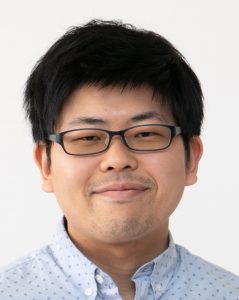 |
|
| homepage | https://motigomeman.wordpress.com/ | |
| 専門分野 | 超巨大ブラックホール | |
| キーワード | 超巨大ブラックホール 多波長天文学 観測天文学 |
|
| 研究テーマ・研究活動 | ||
| http://www.kusastro.kyoto-u.ac.jp/~ichikawa/CVfull_Japanese.pdf を参照 |
||
ガリレオ・ガリレイが望遠鏡を作成して宇宙を観測してから400年。観測装置の発展と人々の叡智の積み重ねによって様々な天体が発見され、我々が持っている宇宙観を劇的に変化させました。その中で、天文学者を含めて多くの人々を魅了し続けている天体の一つがブラックホールです。この未知の天体ですが、実は宇宙にはたくさん存在します。例えば、我々が住んでいる天の川銀河や、宇宙に数多く存在する銀河の中心を見てやると、ほぼ必ず超巨大ブラックホール (supermassive black holes; SMBHs) がいるらしいことがわかってきています。その一方で、このようなSMBHがどうやって誕生したのか? あるいはどうやってここまで大きく太ったのか?については、まだまだあんまり知ることが出来ていません。
このようなSMBH、普段は静かで観測も難しいのですが、一旦周りにガスが集まってくると、SMBHの重力ポテンシャルにガスが落ち込み、ガスの位置エネルギーが熱エネルギーに変換され、そこから光が出てきて、見事非常に明るい天体に変化します。このような天体は活動銀河核と呼ばれます。この活動銀河核を利用して中心にいるSMBHのあらゆる情報 (SMBHの質量や太る速さ) を引き出すことで、SMBHの成長の詳細を調べ、宇宙全体のSMBHの活動を掌握するのが私の研究の目標です。もっと詳しい話を知りたい方は、私のウェブサイトをご覧ください。
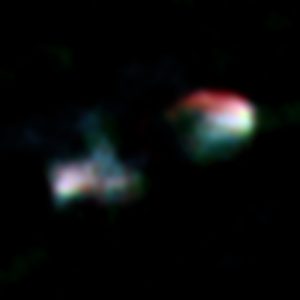 VLA望遠鏡とアルマ望遠鏡の観測から得られたArp 187の電波画像 (VLA 4.86 GHzに青、VLA 8.44GHzに緑、アルマ望遠鏡 133 GHzに赤を割り当てた擬似カラー画像)。2つの電波構造が見えるが、中心核 (画像中央部)は暗く、活動銀河核が「死につつある」ことがわかる。(クレジット:ALMA (ESO/NAOJ/NRAO), Ichikawa et al.)
VLA望遠鏡とアルマ望遠鏡の観測から得られたArp 187の電波画像 (VLA 4.86 GHzに青、VLA 8.44GHzに緑、アルマ望遠鏡 133 GHzに赤を割り当てた擬似カラー画像)。2つの電波構造が見えるが、中心核 (画像中央部)は暗く、活動銀河核が「死につつある」ことがわかる。(クレジット:ALMA (ESO/NAOJ/NRAO), Ichikawa et al.)
| Kohei Ichikawa [Associate professor] |  |
|
| homepage | https://motigomeman.wordpress.com/ | |
| research field | Multiwavelength Astronomy | |
| keywords | Supermassive Black Hole Multiwavelength Astronomy Observational Astronomy |
|
| career | ||
| Please see the link below http://www.kusastro.kyoto-u.ac.jp/~ichikawa/CVfull.pdf |
||
In our universe, there are a tremendous number of galaxies. Thanks to the significant observational efforts of the past 30 years, astronomers now believe that there is at least one supermassive black hole (SMBH) with a mass ranging from 10^6 to 10^10 times that of the Sun. Remarkably, these SMBHs are ubiquitously situated at the center of each galaxy, including our very own Milky Way. However, the exact process of how SMBHs form and accumulate such enormous masses remains a mystery.
Active galactic nuclei (AGN) serve as the primary focus of these studies, as they accrete surrounding gas and convert gravitational potential energy into copious amounts of heat and thermal radiation. Despite AGN emitting intense radiation across various wavelengths, my research centers on two key spectral bands crucial for understanding SMBH growth. One is X-ray radiation, which emanates directly from the nucleus and provides insight into the current power of AGN. The other critical band is infrared (IR) radiation, which arises from the surrounding dust heated by the central engine. Infrared observations allow us to gauge the quantity of dust, or future ‘fuel’ for AGN, located around the central engine.
 The radio band composite image of Arp 187 obtained by VLA and ALMA telescopes (blue: VLA 4.86 GHz, green: VLA 8.44 GHz, red: ALMA 133 GHz). The image shows clear bimodal jet lobes, but the central nucleus (center of the image) is dark/non-detection, indicating that central AGN is “dying”. © ALMA (ESO/NAOJ/NRAO), Ichikawa et al.
The radio band composite image of Arp 187 obtained by VLA and ALMA telescopes (blue: VLA 4.86 GHz, green: VLA 8.44 GHz, red: ALMA 133 GHz). The image shows clear bimodal jet lobes, but the central nucleus (center of the image) is dark/non-detection, indicating that central AGN is “dying”. © ALMA (ESO/NAOJ/NRAO), Ichikawa et al.
[English]
| 辻川 信二[教授] | 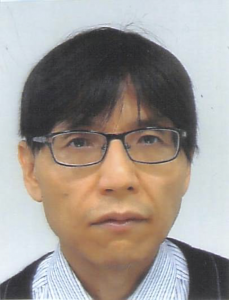 |
|
| homepage | https://www.tsujikawa.phys.waseda.ac.jp | |
| 専門分野 | 宇宙物理学,一般相対論 | |
| 研究テーマ・研究活動 | ||
| ●日本物理学会 | ||
| 「現代物理学に関する国際学会誌D」 編集委員 「一般相対論および重力」 国際学会組織委員 |
||
近年の観測技術の進歩に伴い,宇宙論の研究は急速な進展を見せている. 特に,
などの宇宙物理学の理論研究が,観測から検証可能な時代になっている.本研究室では,下記のような多様な内容の研究を行っている.
特に,CMBの温度揺らぎなどの最新の観測データからインフレーションなどの宇宙初期の物理現象の検証を行うことや,現在の宇宙の全エネルギーの約70%近くを占める暗黒エネルギーの起源の理論的な探究と超新星やCMBなどの観測からの制限の研究(下図を参照)を中心に行っている.特に,インフレーションと暗黒エネルギーという宇宙初期と後期の2つの加速膨張の起源は未だに解明されておらず,2015年に初検出された重力波やその他の多様な観測データを用いて,これらの起源に迫ることを目標にしている.
| Shinji Tsujikawa [Professor] |  |
|
| homepage | https://www.tsujikawa.phys.waseda.ac.jp | |
| research field | Cosmology General Relativity |
|
| research keywords | ||
| Inflation Cosmic microwave background Large-scale structures Dark energy Extended theories of gravity Black holes Neutron stars |
||
With the development of observational techniques over the past few decades, the research on cosmology has made enormous progress. By exploiting observational data, it is now possible to probe the physics like
In our lab, we are working on a wide variety of research topics related to cosmology and general relativity listed below.
In particular, we probe the physics in the early Universe like inflation by using the latest observational data of CMB. We also try to understand the source for late-time cosmic acceleration from the theoretical viewpoint and place constraints on dark energy models from observational data including supernovae type-Ia and CMB (see the figure below). The underlying physics of two epochs of cosmic acceleration in the early and late Universe has not been completely understood yet, so we would like to approach the origins of them by using numerous observational data including gravitational waves first detected in 2015.
Ultimately, we aim to construct a viable cosmological model consistent with observations in theories beyond General Relativity and Standard Model of particle physics.
[English]
| 小池 茂昭 [教授] | 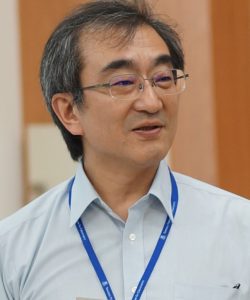 |
|
 |
||
| homepage | https://skoike.w.waseda.jp | |
| 専門分野 | 応用解析、完全非線型偏微分方程式 | |
| 研究テーマ・研究活動 | ||
| 粘性解・正則性理論・自由境界問題・動的計画原理1981年 早稲田大学理工学部物理学科卒業 1988年 早稲田大学理工学部・助手 1989年 東京都立大学理学部・助手 1989年 理学博士(早稲田大学) 1992年 埼玉大学理学部・助教授 2002年 埼玉大学理学部・教授 2010年 日本数学会 JMSJ論文賞 2012年 東北大学理学部・教授 2016年 日本数学会 解析学賞 2019年 早稲田大学理工学術院・教授 |
||
物理学や生物学・化学に現れる多くの自然現象は偏微分方程式として記述され、数学の大きな分野として研究されています。より現実に即したモデルを扱うため、近年、様々な非線型偏微分方程式の研究が盛んに行われています。ほとんどの場合に、偏微分方程式の解を「求める」ことはできません。そこで、解の候補「弱い意味での解」(弱解と呼ぶ)をまず求め、それが「本当の意味での解」になることを示すという2段階に研究を分けています。(後半の部分は、正則性理論と呼ばれることがあります。)自然科学に現れる偏微分方程式の弱解は、シュワルツの超関数が適切です。これは、簡単に言うと「部分積分」を通して得られる弱解です。
一方、工学や最適制御理論など、動的計画原理を通して表現される方程式は完全非線型と呼ばれるもので、方程式が部分積分に適さないタイプです。実は、部分積分が適さない非線型偏微分方程式は幾何学にもしばしば現れます。それら、完全非線型方程式のうち「楕円型」と呼ばれる順序保存型の方程式に対し、別のタイプの弱解(粘性解と言います)がクランダールとリオンスにより1980年初頭に導入され、以降、理論と応用の両面で発展してきました。粘性解は、最大値原理「関数が最大値をとる点では、二回微分は正ではない(非負である)」を通して得られた弱解の概念です。
部分積分も最大値原理も、高校生でも知ってる事実が数学に大きな改革を起こしたわけです。
現在の私の興味の中心は、粘性解の正則性理論です。これは、易しくない理論ですが、
小池研究室に来る学生の多くは、柔軟な頭脳で研究を進めています。
| Shigeaki Koike [Professor] |  |
|
 |
||
| homepage | https://skoike.w.waseda.jp | |
| research field | Applied Analysis, Fully Nonlinear PDEs | |
| research keywords・career | ||
| Viscosity Solutions・Regularity Theory・Free Boundary Problems・Dynamic Programming Principle1988 Research Associate (Waseda University) 1989 Research Associate (Tokyo Metropolitan University) 1989 Phd (Waseda University) 1992 Associate Professor (Saitama University) 2002 Professor (Saitama University) 2010 JMSJ Outstanding Paper Prize 2012 Professor (Tohoku University) 2016 Analysis Prize 2019 Professor (Waseda University) |
||
Various phenomena arising in physics, biology, chemistry can be described by PDEs (partial differential equations), which have been studied as a big research area of mathematics. To consider more realistic models, we are forced to work in nonlinear PDEs.
In research of PDEs, it is almost impossible to obtain solutions expressed by concrete functions. Instead, we first look for a candidate of solutions (solutions in a weak sense) called “weak solutions”, then we try to show that it is a true solution. The second part is called regularity theory which is a never-ending story in PDE theory. For PDEs from natural sciences, weak solutions are considered in the distribution sense developed by L. Schwartz in 1940s. Roughly speaking, the notion of weak solutions in the distribution sense is defined via the integration by parts.
On the other hand, to deal with PDEs arising in Engineerings/Optimal Control Theory via Dynamic Programming Principle, we cannot integrate them by parts. Such PDEs are categorized in fully nonlinear type. In fact, such PDEs also appear in the field of geometry in mathematics.
To study fully nonlinear elliptic/parabolic PDEs, Crandall and Lions introduced a new notion of weak solutions called “viscosity solutions” in early 1980. Afterwards, huge amount of research of its theory and various applications such as game theory, mathematical finance, curvature flows etc. have been done by many mathematicians. The notion of viscosity solutions is derived through the maximum principle: “If a function attains its maximum at a point, then the second derivative cannot be positive”
It is surprising to know that two big inventions come from easy facts which even high-school students understand.
My recent interests are mainly the regularity theory of viscosity solutions, which is far from an easy task but many of my students work around this field with flexible brains.
[English]
| 井上 昭雄 [教授] | 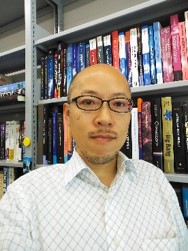 |
|
| homepage | https://www.obsap.phys.waseda.ac.jp/ | |
| 専門分野 | 観測宇宙物理学 | |
| 研究テーマ・研究活動 | ||
| 最遠方銀河、宇宙再電離、銀河形成進化、星間物理学、宇宙塵、惑星系形成1998年 京都大学理学部 卒業 2003年 京都大学大学院理学研究科 修了 博士(理学) 2004年 日本学術振興会海外特別研究員 フランス・マルセイユ天体物理学研究所 2005年 大阪産業大学教養部 講師 2008年 大阪産業大学教養部 准教授 2017年 大阪産業大学デザイン工学部 准教授 2019年 現職 |
||
アルマ望遠鏡、すばる望遠鏡や、ハッブル宇宙望遠鏡などの世界最先端の天文観測装置を駆使して、私たちが棲むこの宇宙の歴史、銀河の形成と進化のようすを解き明かすことを目指しています。
現在の宇宙の年齢は138億年と推定されています(図1参照)。その最初の10億年の間に、宇宙で最初の天体が生まれ、そして、大規模な星団である銀河が誕生したと理論的には予想されています。そのころの銀河を観測するのは、銀河がまだ小さく、また遠いために暗く、とても難しいのですが、アルマ望遠鏡を使って、なんとか今から約133億年前の銀河までは見つけることができました(2018年Nature誌に掲載、図2参照)。
また、その時代には、宇宙再電離が起こりました。これは、はじめ電離していた物質が、宇宙年齢約40万年ころにいったん中性になったのち、天体からの強い紫外線により、再び電離したという現象です。この宇宙再電離が、具体的にはどんな天体(銀河なのかブラックホールなのか)の紫外線で起こったのか、また、電離の進み方はどのようなものだったのか、などについても調べています。
ひるがえって、太陽系の近くにも興味深い天体が多数あります。例えば、発見ラッシュがつづいている太陽系外惑星が挙げられます。惑星系がどのように生まれるのかという研究も並行して行なっています。
| Akio Inoue [Professor] |  |
|
| homepage | https://www.obsap.phys.waseda.ac.jp/ | |
| research field | Observational astrophysics | |
| research keywords・career | ||
| Most distant galaxies, cosmic reionization, galaxy formation and evolution, interstellar physics, cosmic dust, planet formation1998 Kyoto University, Faculty of Science 2003 Kyoto University, Graduate School of Science, D.Sc. 2004 JSPS Post-doctoral fellow for research abroad at Laboratoire d’Astrophysique de Marseille 2005 Assistant professor at Osaka Sangyo University, College of General Education 2008 Associate professor at Osaka Sangyo University, College of General Education 2017 Associate professor at Osaka Sangyo University, Faculty of Design Technology 2019 Current position |
||
Using world’s cutting-edge astronomical facilities such as ALMA, Subaru and Hubble Space Telescope, I am working on the topics of the history of the Universe where we live and the formation and evolution of galaxies.
The current cosmic age is estimated at 13.8 billion years (Figure 1). During the first 1 billion years, the first objects and galaxies were expected to be formed theoretically. Observationally, it is difficult to find such objects because they are so faint due to the smallness and great distances. Fortunately, we discovered a galaxy at 13.3 billion light-years by using ALMA (published in Nature, 2018; Figure 2).
In the same era, cosmic reionization happened. This is a phenomenon that the matter in the Universe was ionized by strong ultraviolet radiation from astronomical objects
after it became once neutral at about 400 thousands years after the Big Bang when the matter was first ionized. I am exploring what kind of objects (galaxies or blackholes) actually ionized the Universe and how reionization proceeded.
In addition, there are also many interesting objects located in the Milky Way. For example, many discovery reports are coming up about extrasolar planets. I am also studying how such planetary systems form.
[English]
| 北 智洋 [教授] | 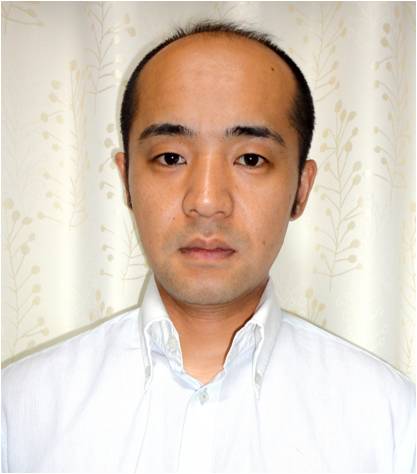 |
|
| homepage | https://tkita.w.waseda.jp/ | |
| 専門分野 | 光集積デバイス、シリコンフォトニクス | |
| 研究テーマ・研究活動 | ||
| シリコンフォトニクス、半導体レーザー1998年 早稲田大学理工学部電気電子情報工学科卒業 2003年 北陸先端科学技術大学院大学材料科学研究科博士後期課程修了 2003年 科学技術振興機構半導体スピントロニクスプロジェクト・博士研究員 2007年 東北大学工学研究科通信工学専攻・助教 2016年 東北大学工学研究科通信工学専攻・准教授 2018年 早稲田大学理工学術院・准教授 2022年- 早稲田大学理工学術院・教授 |
||
近年のインターネットの高速化やスマートフォンの普及は人間の生活スタイルに大きな変革をおこしてきました。さらに今後はIoT(Internet of Things)や自動運転などの新しい技術の普及によって、より便利で安全な社会が実現されていくでしょう。これらの情報通信技術の飛躍的な進歩は光ファイバーを介した光通信技術によって支えられています。多くの情報を光信号に変換して通信を行うために、高機能な半導体レーザーや石英PLC(Planer Lightwave Circuit)、光ファイバー等の光デバイスが開発されてきました。しかしながら従来技術の改良だけでは今後の急増する情報通信量に対応する事は難しく革新的な光デバイスの作製技術が待望されています。
光デバイスの小型化・低消費電力化を実現するための切り札として期待されているのがシリコンフォトニクスと呼ばれる、超小型の光デバイスを微小なシリコンチップ上に高密度に集積化する技術です。シリコンは地球上に豊富に存在しCPUやメモリなどの電子デバイスの原料として20世紀の科学技術の主役となってきましたが、21世紀初頭よりシリコンフォトニクスの研究・開発が世界的に活発に行われています。シリコンフォトニクスは、洗練された電子デバイスの作製技術を利用することで高精度・低製造コストに多数の光デバイスを集積化させた光集積チップの実現を可能にします。我々の研究室では、このようなシリコンフォトニクスを応用した集積光デバイスの研究を行っています。図1に任意の波長のレーザー光を出力する事が可能な波長可変レーザーの写真、様々な波長でレーザー発振させた時の光出力の波長スペクトルを重ね合わせた結果を図2に示します。本レーザーは2 mm×3 mmという非常に小さなチップサイズでありながら従来の半導体レーザーを上回る性能を持つ事を実証しています。さらにシリコンだけでなく化合物半導体量子ドット、機能性ポリマーなどの異種材料もシリコン上に集積化する事で従来のデバイスでは成し得なかった集積光デバイスの高機能化・多機能化が可能になると考えています。
このようにして開発した集積光デバイスは、光通信だけでなく医療用光デバイス、環境センシングなどの多岐にわたる応用展開が期待されており、多数の大学、公的研究機関、企業と共同で研究を進めています。
| Tomohiro Kita [Professor] |  |
|
| homepage | https://tkita.w.waseda.jp/ | |
| research field | Integrated optical devices, Silicon photonics | |
| research keywords・career | ||
| Silicon Photonics, Semiconductor LaserBachelor of Electrical engineering March, 1998 Waseda University Master of Material Science March, 2000 Doctor of Material Science March, 2003 Japan Advanced Institute of Science and TechnologyPostdoctoral researcher April, 2003-August, 2007 Japan Science and Technology Agency Assistant professor September, 2007-April, 2016 Tohoku University Associate professor May, 2016-March, 2018 Tohoku University Associate professor April, 2018-March, 2022 Waseda University Professor April, 2022-Present Waseda University |
||
TBD
[English]
物体の端っこである「表面」は、3次元の「結晶」とは全く異なる性質を持つことがあります。「結晶」は、原子が3次元空間において周期性を持って並んだ状態を指しますが、物事には必ず終わりがあるように、どんな物体も必ず端っこ、つまり「表面」が存在します。「表面」では、原子の並びの周期性が破られてしまうので、結晶の性質を理解するには邪魔なものとして扱われていました。しかし、様々な実験装置の開発が進み、表面に着目した研究が行われたことで、表面では、結晶とは異なる2次元の周期性をもつこと、表面特有の物理現象が起きることなどがわかってきました。2次元である表面や界面、1次元であるエッジ、0次元のドットなど、低次元系でおこる不思議な物理現象は、まだまだ未解明なことがたくさんあり、私たちの研究分野では様々な実験手法を用いてその詳細に迫ります。
また、最近では、結晶表面に別の元素の原子を結合させて人工的に作成した「表面超構造」や「原子層物質」の研究も盛んに行われています。2010年ノーベル物理学賞の研究対象であるグラフェンは、3次元結晶であるグラファイトを限界まで薄くした2次元の原子層物質で、高易動度・高柔軟性・高安定性などの点から注目を集めています。鉄とセレンの化合物であるFeSeは、3次元結晶では7.2Kで超伝導に転移しますが、 SrTi03基板の上に1層だけ成長させることで超伝導転移温度が100Kを超えることが報告されています。2016年ノーベル物理学賞の理論が元になったトポロジカル絶縁体は、3次元結晶部分は絶縁体であるが2次元表面部分は金属、といった不思議な性質を持っています。
物質の性質(物性)は、電子の動きが深く関わっているので、電子がどのように動いているのかがわかれば、物性を理解することができます。また、どのような物性を持つかを調べることも重要です。もちろん、原子がどう並んでいるのかも詳しく知る必要があります。私たちの研究室では、低次元物質を創る・見る・測る・理解するをモットーに、走査トンネル電子顕微鏡や光電子分光、電子・陽電子回折などの様々な実験手法を駆使して、低次元物性の解明を行います。
| Akari Takayama [Associate professor] | 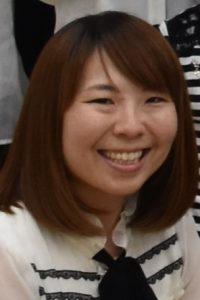 |
|
| homepage | ||
| research field | Surface Physics | |
| research keywords | ||
| Thin film, Surface, Interface, ARPES, STM, Transport | ||
A surface, which is the edge of an object, have different properties from three-dimensional (3D) crystal. A crystal is a solid material whose constituents (such as atoms, molecules, or ions) are arranged in a highly ordered microscopic structure in three-dimensional axes. But every cystal always has its edge, namely surface, as always there is an end in things.In the surface, the periodicity of crystal is broken, so it was treated as an obstacle to understanding the properties of crystals. In recent years, many researches which focus on surface perfomed since various experimental machines have developed.
-Graphene, which is the thinnest graphite, is garnering attention from the viewpoint of high mobility, high flexibility, and high stability.
-FeSe, a compound of iron and selenium, been reported that the superconducting transition temperature is above 100 K by growing one-layer on the SrTiO3 substrate, although the 3D bulk cystal becomes to superconductivity at 7.2 K.
-The topological insulator is known as an insulator in its interior but whose surface contains conducting states.
We can understand the physical properties if we know how the electronic properties. It is also important to investigate physical properties. Of course, we need to know surcase structure. In our laboratory, To clarify the physical properties in low-dimentional system, we perform various experiments by using scanning tunneling electron microscope, photoelectron spectroscopy, electron / positron diffraction, and so on.
[English]
| 望月 維人 [教授] | 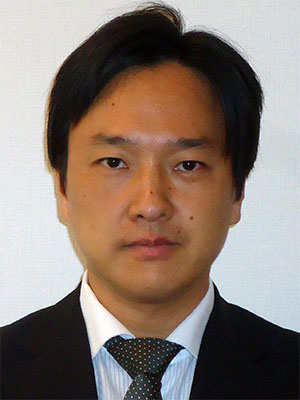 |
|
| homepage | https://mochizuki.w.waseda.jp/ | |
| 専門分野 | 理論物性物理学 | |
| 研究テーマ・研究活動 | ||
| 凝縮系物理学、強相関電子系、創発物性科学、スピントロニクス1998年 東京大学理学部物理学科卒業 2003年 東京大学大学院理学系研究科物理学専攻 博士課程修了 博士(理学) 2003年 日本学術振興会特別研究員(PD) 2006年 理化学研究所 基礎科学特別研究員 2007年 科学技術振興機構戦略的創造研究推進事業研究員 2009年 東京大学大学院工学系研究科・特任講師 2013年 青山学院大学理工学部物理・数理学科・准教授 2013年 科学技術振興機構さきがけ研究員(兼任) 2017年 早稲田大学先進理工学部応用物理学科・教授 |
||
望月研究室では、磁性体、強誘電体、超伝導体、金属、絶縁体と言った様々な物質が示す劇的な物性現象や豊かなデバイス機能を理論的に研究しています。出発点となるのは、物質を構成する電子の運動や相互作用を記述する、量子力学に基づいた数理モデルです。電子は、電流の担い手である「電荷」という自由度に加え、磁石としての性質を担う「スピン」自由度や、原子核の周りにどのような形状で分布するかといった「軌道」という自由度を持ちます。さらに、これらの電子の自由度は、結晶格子の構造や振動モードと結合します。このような効果を考慮して、物質の個性を反映したモデルを構築するのです。次に、構築した物理モデルを量子力学や統計力学、場の量子論、数値解析の手法などを駆使して解析し、実際の物質が示す不思議な物性現象を再現・説明したり、まったく新しい物理現象や物質機能を予言・探索したりするのです。
実は、電子1個の性質というのは、大学の学部で勉強する量子力学という学問のおかげで非常に良く分かっています。しかし、物質の性質を担う膨大な電子は、互いに強く競合・協調して絡み合うことで、1個1個の電子の単純な足し合わせとは違う、劇的で多彩な性質や現象を示します。例えば、低温で電気抵抗がゼロになる「超伝導現象」や、光や磁場をあてると絶縁体と金属の間を移り変わる「光誘起相転移」や「巨大磁気抵抗効果」、温度差を与えると発電する「熱電効果」といった現象や効果がその例です。望月研究室では、このような電子の集団が物質中で繰り広げる想像をはるかに超えたスペクタクルに、紙と鉛筆とコンピュータ、そして熱い情熱で挑みます。
ちなみに、熱い情熱の半分は、純粋な知的好奇心と真理の探究心でできていますが、もう半分は応用を視野にいれた「人類の役に立ちたい」という思いでできています。例えば、「キラル磁性体で実現するスキルミオンと呼ばれるナノ磁気渦(図参照)」や「磁性と誘電性が共存するマルチフェロイックス物質」の研究は、IoT時代やビッグデータ時代に起こる情報爆発問題を解決する高性能な磁気ストレージ素子の実現につながると期待しています。また、「熱電効果」や「超伝導」の研究は、エネルギー問題解決の秘策となるかも知れません。
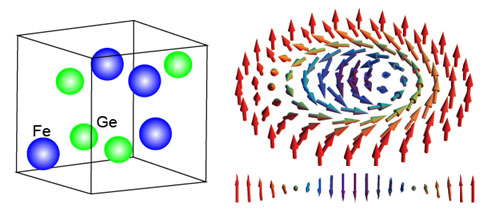
図:キラル磁性体FeGe中に実現する「スキルミオン」と呼ばれるナノ磁気渦。
次世代磁気メモリ素子の情報担体としての応用が期待されている。
| Masahito Mochizuki [Professor] |  |
|
| homepage | https://mochizuki.w.waseda.jp/ | |
| research field | Theoretical condensed-matter physics | |
| research keywords | ||
| Condensed matter physics Strongly correlated electron systems Emergent materials science Spintronics |
||
| link | ||
We are theoretically investigating dramatic physical phenomena and rich device functions of materials such as magnets, electrics, superconductors, metals and insulators. Our starting points are microscopic models, which describe kinetics and interactions of electrons in materials based on quantum mechanics. The electrons have charge, spin, and orbital degrees of freedom, which mutually couple and correlate. Taking account of the interplays between these degrees of freedom, we first construct mathematical models for the materials. Analyzing thus constructed models using quantum mechanics, statistical mechanics, quantum field theory, and numerical techniques, we explore physics behind the amazing phenomena and predict novel physical properties and materials functions.
Properties of individual electrons are understood well, which faithfully obey quantum mechanical laws. However, once many electrons gather, the situation is no longer the same as the case of a single electron, owing to keen competition and cooperation among them. Assembly of vast amounts of electrons show drastic and rich physical phenomena, e.g., magnetism, phase transitions, superconductivities, colossal magnetoresistance. We attack these inconceivable and spectacular phenomena with pencils, papers, computers and enthusiasms as our weapons.
[English]
| 澤田 秀之 [教授] | 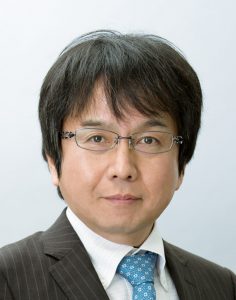 |
|
| homepage | https://www.sawada.phys.waseda.ac.jp/ | |
| 専門分野 | 計測・情報工学研究 | |
| 研究テーマ・研究活動 | ||
| 1990年 早稲田大学理工学部応用物理学科 卒業 1992年 早稲田大学大学院理工学研究科 修士課程修了 1992年~1994年 三井金属鉱業株式会社 勤務 1995年~1998年 日本学術振興会特別研究員DC1 1998年 早稲田大学理工学部・助手 1999年 早稲田大学大学院理工学研究科 博士課程修了 博士(工学) 1999年 香川大学工学部知能機械システム工学科・准教授 2010年 情報処理学会論文賞 受賞 2010年 香川大学工学部知能機械システム工学科・教授 2017年 早稲田大学理工学術院・教授 |
||
人間どうしのコミュニケーションにおいては、言語に加えて視覚、聴覚、触覚、嗅覚、味覚といった五感が有効に利用されています。特に五感を通して伝達される情報は、感性や感情に直接的に働きかけ、円滑なコミュニケーションのために大きな役割を果たしています。視覚や聴覚機構が、カメラとディスプレイ、マイクとスピーカを用いて科学的、工学的に再現されている一方で、例えば人間のように触覚を検知し、また触覚の感覚として工学的に呈示する標準的な手法は、未だ実現されていません。触覚は、目や耳のような特定の生体器官によって対象物の物理的構造を直接検出するのではなく、皮膚の変形や熱伝導といった物理現象を元に、皮膚下に複雑に配置された触覚受容器によって知覚され、これが脳に伝わって「体性感覚」として理解されていることが解っています。本研究室でのテーマの一つとして、そのような触覚感覚を人のように知覚、理解するセンサ、そして映像や音声と同様に遠隔地へ伝送して呈示する技術の研究開発を進めています。更に、視覚、聴覚情報と合わせ、触覚や力などの物理的メディアを統合的に扱い、人間の五感を理解してロボティクス技術で再現する研究を行っています。これらの研究には、高速な演算手法と演算能力、センシング、アクチュエータ技術が不可欠であり、これらを活用した新しい計測・制御技術の研究、人間の体性感覚や感性を柔軟に理解する人工知能研究も大きなテーマとなっています。
2017年から新しく立ち上げる研究室ですが、以下のような研究課題に取り組んでいます。
1) 画像・音響研究グループ: 人間のように見たいもの聴きたいものを柔軟に選択して理解する計測・認識技術の研究
2) 触覚研究グループ: 皮膚下の触覚受容器を直接的に刺激して触覚感覚を創り出し、呈示するためのアクチュエータ、人のように触覚感覚を理解するセンサの研究。また、微小な形状記憶合金(SMA)ワイヤを使ったセンサとアクチュエータのダイナミクス解析と動作モデルの研究
3) ロボティクス研究グループ: 人と機械の柔軟なインタラクションの実現を目指したロボット技術、メカトロニクスの研究開発
4) 人工知能研究グループ: 人体モデルの制御や人の認知機構を実現する人工知能、学習機械、計算機インテリジェンスに関する研究
これらのテーマについては、海外の大学とも共同研究や学生交流を行っています。物理学、数学の普遍的学問を基盤とした計測・制御・ロボティクス研究を通して、国際的に第一線で活躍できる研究者、技術者を育てていきたいと考えています。
| Hideyuki Sawada [Professor] |  |
|
| homepage | https://www.sawada.phys.waseda.ac.jp/ | |
| research field | Measurement and Information Engineering | |
| research keywords | ||
| Image & Sound processing Tactile and haptic applications Robotics Artificial intelligence Human interface |
||
| link | ||
Humans communicate with one another by using not only verbal media but also the five senses such as vision, auditory sense and tactile/touch sensation effectively using their bodies. Information transmitted through the five senses is especially able to affect our emotion and feelings directly making for smooth communication. Visual and auditory mechanisms are widely realized by engineering techniques by employing cameras, visual monitors, microphones and speakers, which are commercially available in common, however no standardized devices for recognizing and displaying tactile sensations have been introduced so far. Light and sounds are directly perceived by our biological organs such as eyes and ears, on the other hand, the sense of touch or the tactile sensation is generated by the physical phenomena that occur at the contact location between the skin and the object. The human skin includes four main tactile receptors, which are Merkel discs, Meissner corpuscles, Ruffini endings and Pacinian corpuscles, to react to different physical stimuli given to the skin, and humans recognize the tactile sensation as somatic sensation according to the nerve signal transmitted from the receptors to the brain.
In this laboratory, the human tactile and haptic sensations are studied as one of the research topics, and the micro sensors and actuators are being developed for recognizing and displaying various tactile sensation as humans do. Such sensors and actuators will be applied for the realization of touching and manipulating objects placed in a distant place, as visual and auditory information are commonly employed for tele-communication. We also study robotics technologies for realizing new relationship between humans and machines. Based on the consideration of human five senses, new sensing, actuating and controlling techniques through the integration of visual, auditory and tactile information are developed. In these studies, the understanding of human intellect, emotion and intuitive behaviors is necessary, and the computational intelligence and the neural computation are also the researching topics along with the development of intelligent measurement and control techniques.
This laboratory is newly established in 2017, and the following research projects are mainly going on.
1) Image and auditory information research team:
Studies of intelligent measurement, recognition and synthesis techniques referring to human behaviors to realize human-like computation and robots.
2) Tactile and haptic research team:
The development of a tactile display to generate various tactile sensations by stimulating four tactile receptors under the skin. Micro-deformation actuators using shape-memory alloy (SMA) wires are developed for generating micro-vibration with various frequencies, and the control techniques are also studied. By employing the tactile actuators, new multimodal VR and AR environment is constructed as the tactile and haptic applications.
3) Robotics research team:
Robotic and mechatronic technologies are studied to realize new intuitive and flexible communication among humans and machines. A talking and singing robot having mechanical vocalization organs like a human is one of the research subjects, which autonomously learn and acquire vocalization skill like a human baby by employing the auditory-feedback learning mechanism.
4) Artificial intelligence research team:
Studies of artificial and computational intelligence, and the neural network for the control of robotic organs and the realization of human perceptive mechanism.
We also have joint and collaborative research projects with foreign Universities, and actively conduct student exchange.
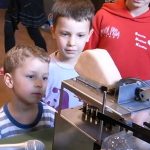
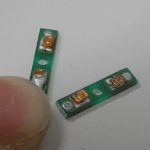
Left: Voice communication robot Right: SMA micro-actuators